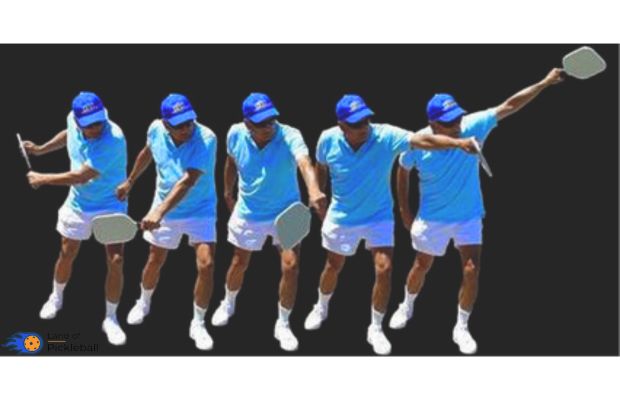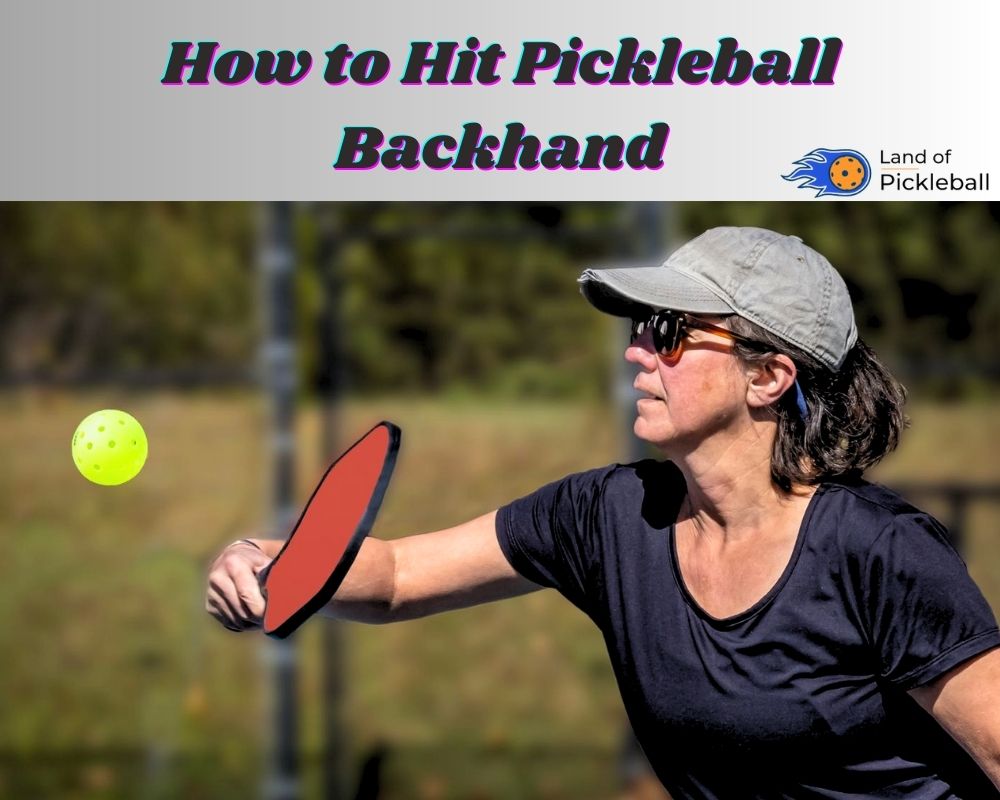How to Hit Pickleball Backhand | Master Your Shot
How to hit pickleball backhand: To do this keep your elbow close, swing the paddle back, then across your body at a 45-degree angle for topspin.
In pickleball, the terms “easy” and “backhand” are rarely associated with players’ proficiencies. For many players, executing a backhand shot poses a challenging act. Often, it leads to strategic avoidance, and they prefer the more comfortable forehand. So, developing a proficient backhand is essential for advancing your game and determining victories on your Pickleball court.
However, a common trouble among pickleball fans is the struggle to execute a backhand shot effectively. This hesitancy often results in players shying away from this aspect of the game. Instead, they go for the less demanding forehand stroke. However, this avoidance tactic stunts skill progression and hinders your rise in the competitive pickleball hierarchy. Hence, it’s time to confront this weakness head-on and go on the journey to master your pickleball backhand.
How to Hit Pickleball Backhand?
Your journey to mastering the pickleball backhand begins with selecting the perfect paddle. So, it’s essential to research and find the paddle that best suits your game style from a wide variety of options.
Master your Basics for Backhand Shot
Now you’ve selected the right equipment, it’s time to focus on the fundamentals of the backhand shot. We’ve introduced the entire process into key steps to achieving your powerful and accurate backhand stroke:
Step 1. Get in the Right Ready Position
After each shot, return to your ready position with your knees bent and paddle up. Meanwhile, you must maintain a parallel stance with your feet shoulder-width apart and feet facing the net.
Step 2. Prepare for the Shot
Rotate your body slightly towards the non-paddle side and pull the paddle back towards your waist. Adjust your foot positioning to be perpendicular to the net.
Step 3. Connect your Paddle and Ball
You can go for the momentum from your core and legs to strike the ball in front of the non-paddle side of your body. You may also focus on generating power through your entire body rather than just your arm.
Step 4. Hit your Ball Forward
Once you have established this contact, push off from your front leg to hit the pickleball forward with a controlled swing. Now hit it in slightly as your shot is still low in position instead of moving up to the net. Maintain a steady wrist and aim for a low shot over the net.
Step 5. Practice Drills
Your consistent Pickleball backhand drills are key to mastering your shot. Dedicate time to drills focused on improving your technique until the backhand becomes a reliable part of your game.

Process to Improve Your Backhand
It’s the process of how you can improve your pickleball backhand conveniently:
Firstly, get better for your incoming ball and position yourself with a slight wind-up motion, ready to execute the backhand shot precisely.
You can utilize your non-dominant hand to provide additional support and stability during the backhand stroke. It enhances your control and power.
You need to ensure proper footwork by stepping into the shot with the appropriate foot for your dominant hand. It maximizes the strength and accuracy of your backhand. Instead, non-stepping may cause to play the weaker shot. Remember, it’s pretty favorable to upgrade your Backhand shot in small Pickleball courts.
Players must focus on making contact with the ball while it’s in front of your body. This approach allows for a more powerful and controlled shot.
Eventually, complete your shot with a strong follow-through. Now extend your paddle upward to impart topspin and ensure the ball clears the net effectively.

How can I Execute the Backhand Roll?
Combine the mechanics outlined above to execute a powerful backhand roll with these step-by-step instructions:
Common Pitfalls You Must Avoid
Some technical errors can weaken your backhand roll. This shot has a pretty surprising movement for all players.

Observing the backhand roll in action might give the impression that it heavily relies on wrist movement. After all, it shares similarities with table tennis, a sport known for its emphasis on wrist movements. This aspect gives it the nickname “flick,” It’s understandable why many mistakenly believe the wrist plays a predominant role in this shot.
However, depending solely on wrist flicks for power is a misstep. While getting the ball over the net may suit, it lacks the necessary velocity to keep opponents off balance. Instead, aim for your legs and the snapping movement of your arm to extend and generate maximum power.
The backhand roll effectively counters incoming cross-court dinks and redirects the ball directly to your opponent. But where precisely should your aim lie? There are several strategic approaches to consider.
One effective tactic involves targeting your opponent’s right hip or shoulder, which is particularly effective in disrupting opponents with quick responses. This forces them to swiftly adjust their stance, ideally leading to a less-than-ideal return. Another viable option is the foot shot, though it grants opponents more reaction time. This application of topspin still presents a challenging return.
Incorrect angle management can result in undesirable outcomes, such as sending the ball out of bounds or into the net. An excessively open paddle face leads to popping the ball up or overshooting. Meanwhile, a closed face replicates a serving motion in the net.
Remember, angle control extends beyond the paddle face; the upward motion of your arm plays a vital role. As with the paddle face, your overly open or closed arm motion significantly impacts the ball’s trajectory. It’ll emphasize the importance of precision in every aspect of the shot.
FAQs
Final Verdict
Pickleball players need to improve their backhand shot to maintain control and versatility on the court. So, to master this backhand roll, which can be a game-changer, introduces a potent weapon capable of disrupting opponents’ rhythm and regaining momentum. With its speed and topspin, the backhand roll creates challenging situations for opponents, offering versatility to handle low balls effectively.
Focus on simple yet effective mechanics and commit to consistent practice. Your backhand can evolve from a weakness into a formidable asset. You can also hit your backhand professionally by following our step-by-step process.






